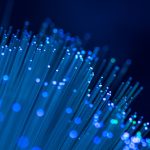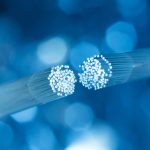Ethernet Network Cable Versus Fiber Optics: Pros & Cons
Telecommunications equipment uses two main types of wires to transmit information: Ethernet network cables and fiber optics. Both types of technology are everywhere. Which one is right for you? Today’s blog from CKC Data Solutions explains the pros and cons of ethernet network cables versus fiber optics.
How do ethernet network cables and fiber optics work?
Ethernet network cables and fiber optics work using two different physical media. Ethernet cables utilize copper wires bundled together in a configuration that’s similar to a phone wire. Fiber optics are made of thin strands of glass. Light travels down fiber optic cables at nearly two-thirds the speed of light.
What are some pros of fiber optics?
Fiber optics offer greater speed. They also work well over long distances. If you need data transmission from one end of your plant to the other, fiber optics are definitely the way to go. This technology offers better security versus Ethernet network cables. The glass fibers are less susceptible to electromagnetic interference and make it harder for hackers to intercept information. Fiber optic cables are also smaller than Ethernet cables, which means you fit more of them into a conduit. Fiber requires less downtime and less related components.
What are some cons of fiber optics?
The one downside of fiber optics is the higher upfront costs. However, this is mitigated when you install enough fibers to take into account any expansion of your building’s telecommunications infrastructure. If you install air blown fiber optics, you future-proof your telecommunications infrastructure because the second installation of air blown fiber returns your investment.
What are some pros of Ethernet network cables?
Ethernet network cables are great over short distances. If you want to connect desktop computers to a local area network (LAN) via a router in a server room next door, Ethernet is the way to go. It’s been an industry standard for years. Ethernet is also less expensive than fiber optics.
What are some cons of Ethernet network cables?
Ethernet network cables are prone to interference, particularly if they’re installed next to other electromagnetic infrastructure. Signals that travel through copper wire usually need a boost after just 328 feet. Fiber optics can go for thousands of feet without losing any signal or data.
Who can install Ethernet network cables & fiber optics in Springfield, Missouri?
CKC Data Solutions installs the hardware you need for all of your facility’s telecommunications and networking infrastructure. Our expert staff will come to your place, perform an audit, and recommend how to optimize your technology. Contact CKC Data Solutions or call (417) 812-5251 for more information.





